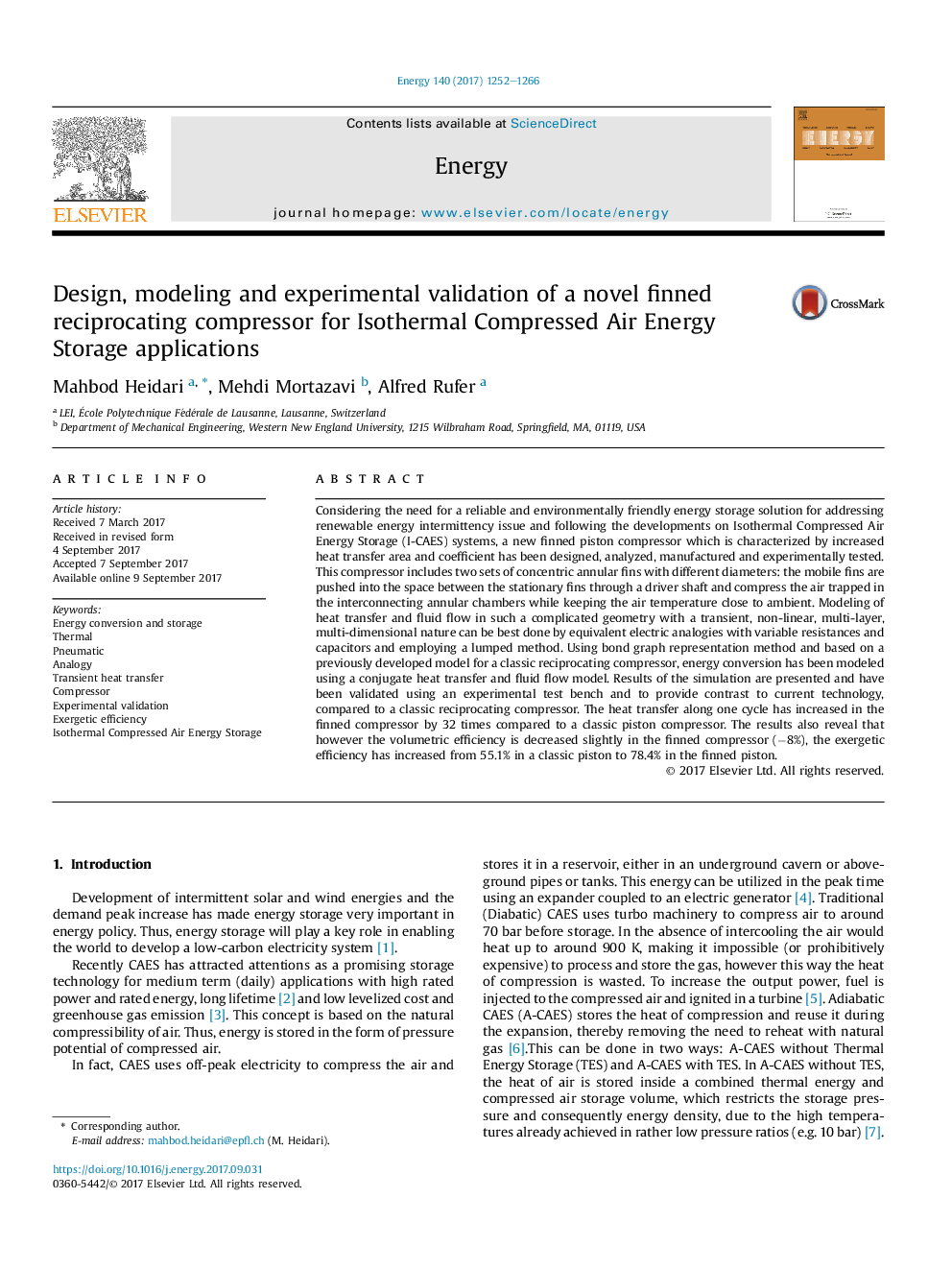| کد مقاله | کد نشریه | سال انتشار | مقاله انگلیسی | نسخه تمام متن |
|---|---|---|---|---|
| 5475472 | 1521411 | 2017 | 15 صفحه PDF | دانلود رایگان |
عنوان انگلیسی مقاله ISI
Design, modeling and experimental validation of a novel finned reciprocating compressor for Isothermal Compressed Air Energy Storage applications
ترجمه فارسی عنوان
طراحی، مدل سازی و اعتبار سنجی تجربی از یک کمپرسور مجزا فنری برای برنامه های ذخیره سازی انرژی هوا فشرده ایزوترمال
دانلود مقاله + سفارش ترجمه
دانلود مقاله ISI انگلیسی
رایگان برای ایرانیان
کلمات کلیدی
تبدیل انرژی و ذخیره سازی، حرارتی پنوماتیک، تقلید، انتقال حرارت گذرا، کمپرسور، اعتبار تجربی، راندمان اضافی، ذخیره انرژی انرژی فشرده ایزوترمال،
موضوعات مرتبط
مهندسی و علوم پایه
مهندسی انرژی
انرژی (عمومی)
چکیده انگلیسی
Considering the need for a reliable and environmentally friendly energy storage solution for addressing renewable energy intermittency issue and following the developments on Isothermal Compressed Air Energy Storage (I-CAES) systems, a new finned piston compressor which is characterized by increased heat transfer area and coefficient has been designed, analyzed, manufactured and experimentally tested. This compressor includes two sets of concentric annular fins with different diameters: the mobile fins are pushed into the space between the stationary fins through a driver shaft and compress the air trapped in the interconnecting annular chambers while keeping the air temperature close to ambient. Modeling of heat transfer and fluid flow in such a complicated geometry with a transient, non-linear, multi-layer, multi-dimensional nature can be best done by equivalent electric analogies with variable resistances and capacitors and employing a lumped method. Using bond graph representation method and based on a previously developed model for a classic reciprocating compressor, energy conversion has been modeled using a conjugate heat transfer and fluid flow model. Results of the simulation are presented and have been validated using an experimental test bench and to provide contrast to current technology, compared to a classic reciprocating compressor. The heat transfer along one cycle has increased in the finned compressor by 32 times compared to a classic piston compressor. The results also reveal that however the volumetric efficiency is decreased slightly in the finned compressor (â8%), the exergetic efficiency has increased from 55.1% in a classic piston to 78.4% in the finned piston.
ناشر
Database: Elsevier - ScienceDirect (ساینس دایرکت)
Journal: Energy - Volume 140, Part 1, 1 December 2017, Pages 1252-1266
Journal: Energy - Volume 140, Part 1, 1 December 2017, Pages 1252-1266
نویسندگان
Mahbod Heidari, Mehdi Mortazavi, Alfred Rufer,
